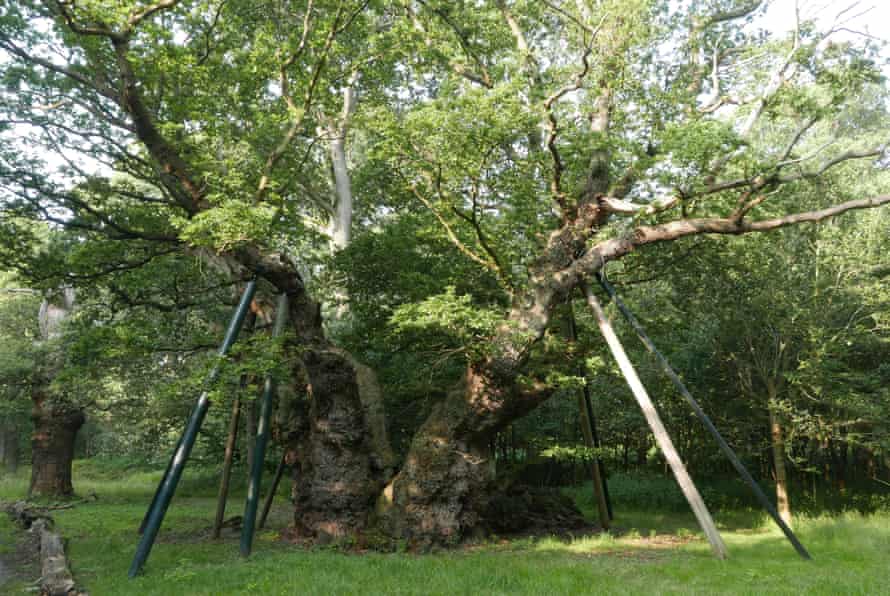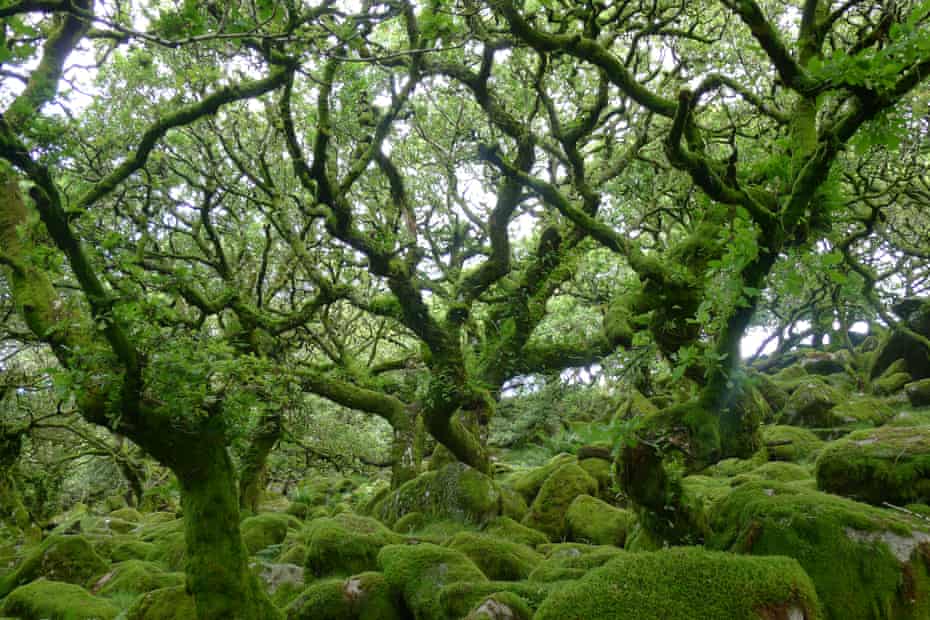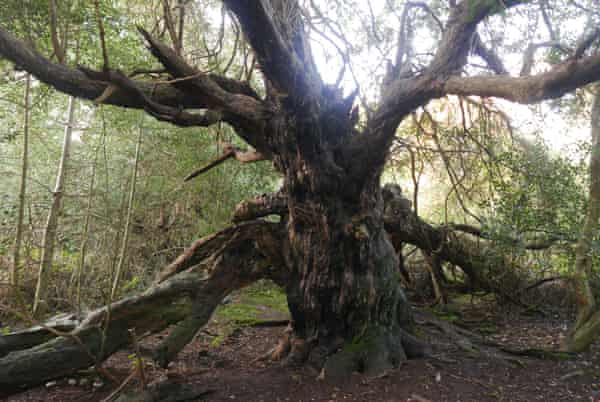I am not exactly sure where my fascination and love of trees came from, but I do remember from a very young age seeing fallen acorns under a huge oak tree and being told that this tree had produced all of these acorns and that each one, like the one I had picked up and was holding in my hand, could grow into an oak tree and be hundreds of years old.
After spending a lifetime working with trees, they continue to amaze me with their ability to grow and adapt through decades, and in many cases centuries, of seasonal change.
Recently we’ve discovered their mechanism for communicating with each other below ground, which has become known as the wood wide web. The web is most active and thrives in areas of unworked woodlands (one) and forests, such as ancient woods, where the soil has been left undisturbed for centuries. This has led to an extensive underground network, linking trees in a forest together, young and old, helping them flourish as one giant superorganism. They share nutrients and even warn each other of attacks from pests.
From my childhood days, the majestic oak has remained one of my favorite trees. After the yew, they are the longest living of our native British trees, living up to and occasionally more than 1,000 years, supporting the highest associated biodiversity, hosting hundreds of species of moths, butterflies, other insects, birds and mammals, as well as ferns, fungi, lichens and mosses (two). The total is higher than that of any other tree species in Britain.
-
two. An oak tree in Chirk, Wales. After the yew, the oak is the longest living of native British trees
With oaks there continues to be life after death. Ancient oaks are brilliant as deadwood habitat, providing a niche for some specialist invertebrates that are rare and endangered and can only live on ancient decaying oak.
We have two native species: the sessile oak (Quercus petraea) and the English or pedunculate oak (Quercus robur). The leaf stalks on the pedunculate oak are very short, less than half a centimetre, whereas the leaf stalks of the sessile oak are 1cm-2cm long. This is the opposite with their fruits (acorns): stalks on the pedunculate oak may be as long as 10cm, while on the sessile oak they are about 2cm long.
Because of their presence in the landscape and their longevity, oaks were often used as markers and boundary trees. In Addlestone, Surrey, a tree known as the Crouch oak (3) is thought to be part of the old Windsor Forest and Great Park’s Surrey boundary; it has now become an isolated street tree on the outskirts of the town.

The oldest living tree in what remains of the Great Park today is a pedunculate oak named King Offa’s oak (4), after the eighth-century Mercian king, and is said to date back to AD 710. It has the largest girth – more than 11 meters (36ft) – of the ancient oaks in the park. Not surprisingly, the centuries have taken their toll on this magnificent tree. Two individual sections are propped and partly collapsed, and a third section lies on the ground. However, King Offa’s oak still has lots of healthy parts that produce new growth every year.


wyndham’s oak (5) in Dorset is also called the Silton Oak and the Judge’s Oak and is thought to be between 700 and 800 years old. Now standing in the meadow with few other trees, again, it is thought to have been a boundary tree on the edge of the forest of Gillingham, once a royal hunting forest.
Old trees often have interesting associated stories to tell, but mystery surrounds an outstanding old sycamore (or is it sycamores?) that greets you as you enter the car park to the National Trust property at Saltram. This very special tree (6) is a central feature in the car park and there doesn’t seem to be any written evidence as to why it has grown this way.

I have visited it many times and my thoughts are that it is part of a hedgerow long ago removed and perhaps layered. None of the old maps make this obvious, but its exposed roots imply that it may once have been part of a hedge bank. Another reason for these trunks, all lined up but obviously joined as one, is that it might just have been a fallen tree that was left and layered (propagated) itself, producing multiple stems, which were then purposely left as a feature. Without more evidence we will probably never know.
Two intriguing woods can be visited in southern England. The first is Wistman’s Wood, one of three isolated ancient upland woodlands on Dartmoor in Devon. When I first walked into this magical and beautiful woodland many years ago, I was stopped in my tracks by the sight of the dwarf oaks, their gnarled and entwined branches twisting in all directions, and below them an understory of granite boulders (7) covered with moss and lichen. The changing dappled light produces shadows and patterns across the boulders, known locally as clitter, adding to the wood’s spectral qualities. The branches are clothed in a soft, verdant covering of epiphytic mosses and hanging lichens. It truly is an amazing and mystical place. One legend tells of the wood being home to large black “wisht hounds” that had blood-red eyes and huge yellow fangs and roamed the moors on dark and misty nights looking for unwary travellers, led by the devil, or the Old Crockern, an ancient spirit living on the moor on Crockern Tor.

-
7. Wistman’s Wood in Dartmoor, where ‘the branches are clothed in a soft, verdant covering of epiphytic mosses and hanging lichens’
The second is the forest at Kingley Vale in West Sussex made up predominantly of yew, but with ash, hawthorn, holly and oak. Sadly, many of the ash trees have been infected with ash dieback (Hymenoscyphus fraxineus) and most are unlikely to survive.
It is the yew trees that fascinate visitors most, with their twisting branches, snaking out from the parent trunk, reaching down to the ground (8) and creating arches and alleyways, which you have to scramble through to reach cave- and cathedral-like spaces. The branches that reach the ground, layer themselves, producing new roots and regrowing as siblings around their parent, increasing the forest’s spread.
These are known as walking trees and I love the thought of young trees being able to slowly walk farther and farther from their parents, exploring and extending their range by continually rooting the lower outstretched limbs. This is something you will only see in a natural yew forest where the trees can develop without human intervention, unlike the equally amazing huge ancient yews of the churchyards with all their lower limbs removed to about head height and above for easy access.

Clumber Park in Nottinghamshire is home to Europe’s longest lime tree avenue (tilia x europaea), planted in 1840. It is almost 2 miles (4km) long and has 1,296 common limes planted along what is also the longest double avenue of lime trees in Europe. The avenue was closed for a time during the second world war when it was used as open-air storage for munitions in hundreds of corrugated iron stores. The road between the limes was reopened in 1955.
Surprisingly, the black bands that can still be clearly seen on each of the trunks along the avenue (9) were from bands of grease painted on them in 1906 when the trees were found to be under attack from insects. The grease bands were to prevent the female winter moths climbing up them and laying their eggs in the canopies. Similarly, white bands painted on street lime trees to help them be seen during the blackouts of the second world war can often still be seen today.

Farther north at Dunoon in Argyll, Scotland, entering the Benmore Botanic Gardens you are welcomed by the Avenue of Giants, dramatic lines of giant redwoods (Sequoiadendron giganteum) (10). Twenty pairs were planted in 1863 (one was replaced in 1995) by the American owner of the Benmore estate, James Piers Patrick. These giants are now nearly 170 years old. They stand at more than 50m, the tallest reaching almost 57m, and have girths ranging from more than 5m to almost 7m. They are among the oldest and tallest redwoods in Europe. As you walk along its 350-meter length, you feel very small.

The life of a tree can be extended by coppicing and pollarding, traditional, ancient methods of woodland management that take advantage of the natural process by which trees grow. And it is through these practices of continually cutting back species for a variety of uses that some of our oldest trees survive, as coppiced stools and pollards, prolonging them long beyond their normal lifespan.
Coppicing and pollarding mainly differ in the height of cut. Coppice is cut back to almost ground level, while pollards are cut back to the main trunk of a tree, but at varying heights, usually about head height. This was done to prevent livestock grazing the new regrowth.
Many of the ancient and veteran pollarded and coppiced trees in forests today have not been managed for wood production for many decades and are known as lapsed pollards (eleven) and coppice (12). These trees, although visually stunning, are difficult to manage, with branch attachments that become stressed due to their weight held above often decaying, hollow trunks. They are, however, home to many invertebrates that can only survive on the decaying wood they produce, and nesting birds and sheltering bats that make use of the hollows.


-
Coppicing and pollarding – such as these lapsed beech pollards (11, left) and lapsed beech coppice (12) – are traditional, ancient methods of woodland management
Coppicing has had a resurgence in popularity as it is a sustainable management method of woodland and woodland materials. Coppiced woodland is a haven for a rich diversity of wildlife, including rarer mammals such as the dormouse, and is carpeted with wildflowers in the spring. With enlightened understanding of the importance of sustainability, coppicing has a lot to offer, and I for one hope it is a practice that will continue to grow in its popularity.
Great Trees of Britain and Ireland by Tony Hall (£25) is published by Kew Publishing on 5 May. The author is head of temperature collections – arboretum at the Royal Botanic Gardens, Kew.
Find more age of extinction coverage here, and follow biodiversity reporters Phoebe Weston and Patrick Greenfield on Twitter for all the latest news and features
www.theguardian.com
George is Digismak’s reported cum editor with 13 years of experience in Journalism